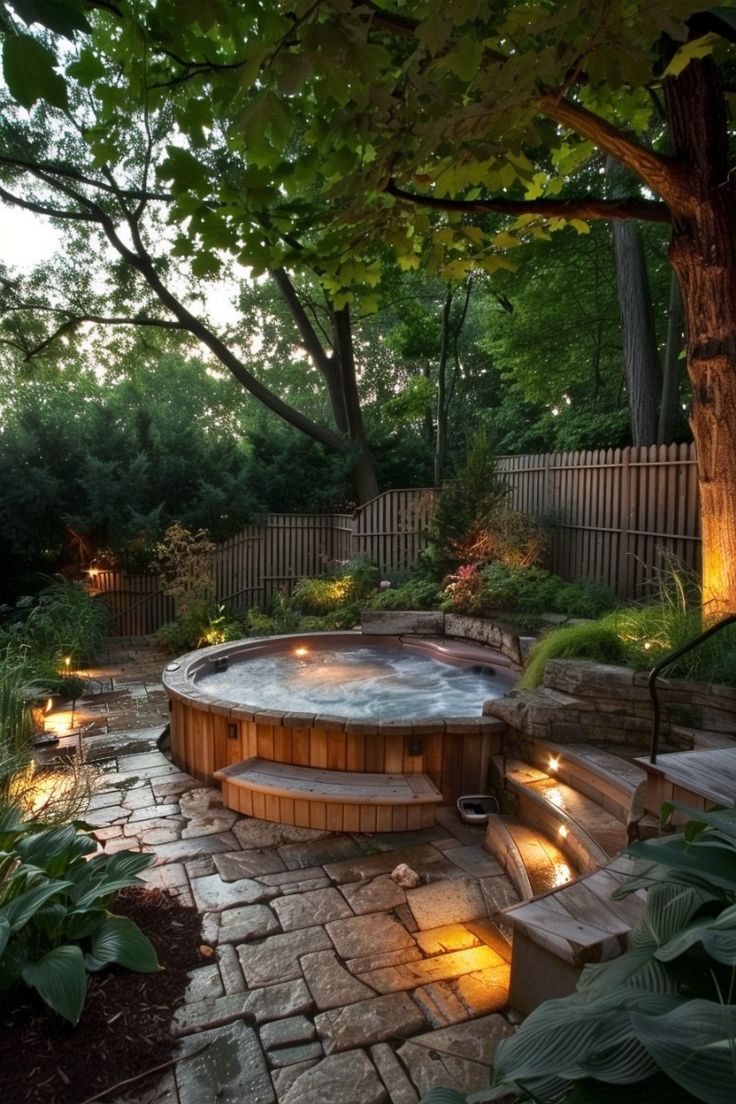Discover 6 common DIY hot tub repairs every owner should know—fix jets, leaks, heater issues, and more without a service call. Keep your spa running smoothly and save money with these simple troubleshooting tips.

Disclaimer: this post may contain affiliate links, and every purchase made through these links will give me a small commission (at absolutely no extra cost for you!) AS AN AMAZON ASSOCIATE AND REWARDSTYLE MEMBER, I EARN FROM QUALIFYING PURCHASES. See Privacy Policy for additional info.
Hot tubs promise effortless relaxation, but keeping them running sometimes calls for a little hands-on work. The good news? Most DIY hot tub repairs are simple enough for any owner to tackle with a little guidance.
Hot tubs promise effortless relaxation, but keeping them running sometimes calls for a little hands-on work. The good news is most everyday issues do not require a service call if you know what to look for.
A little know-how can help you fix problems early and keep your spa bubbling without interruption. How do you pull it off? Keep reading.
1. Dealing with Malfunctioning Jets
A hot tub without properly working jets feels like a car missing its engine. When the soothing streams slow to a trickle or stop altogether, chances are good it is a simple problem you can solve yourself. Most jet issues come down to:
- Clogged lines
- Minor airlocks
- Scale buildup
- Worn or misaligned jet internals
- Low water levels causing suction problems
- Pump performance dips or blockages
A quick inspection and cleaning often bring them back to life. In some cases, performance dips may actually point to common hot tub circulation problems, so it’s worth checking your pump and circulation system as part of the troubleshooting process. When cleaning does not do the trick, replacing the jet might be necessary. Matching the correct part is important, and trusted sources specializing in spa jets for hot tubs make it easy to find the right fit without the guesswork.
A few smart habits like maintaining balanced water chemistry and occasionally inspecting jet seals can prevent future clogs and wear.
2. Patching Minor Leaks
Identifying a leak source early is crucial to avoid expensive damage. Most small leaks come from common problem areas like pump seals or aging gaskets. A simple dye test, using a few drops of brightly colored liquid near suspected areas, can help you track the flow and locate the leak. Once found, the repair could be as easy as tightening a fitting or applying a waterproof epoxy.
For surface cracks, a fiberglass repair kit can work wonders if you catch the damage early enough. Just remember: always disconnect the power before performing any inspection or repair.
3. Solving Heater Issues
Nothing kills the hot tub mood faster than realizing your water is barely warmer than a kiddie pool.
Check your filter. A clogged filter reduces water flow and can cause the heater to shut off automatically as a safety precaution. Reset the high-limit switch, which trips if the water overheats. If neither of these simple steps solves the problem, you might need to test the heater element itself with a multimeter to check for continuity.
4. Clearing Filter Clogs
Your hot tub’s filter is like its immune system. When it gets overwhelmed, everything else starts to struggle. Symptoms of a clogged filter include weak jet pressure and heater shutdowns.
Regular maintenance is your first line of defense. Every week, remove the filter and give it a solid rinse with a hose nozzle that can reach deep into the folds. About once a month, soak it in a special cleaning solution.
Experts recommend replacing spa filters every twelve months to maintain water clarity and protect your equipment. It is also a smart move to keep a spare filter on hand.
5. Resetting Circuit Breaker Trips
If your hot tub keeps tripping the breaker, do not panic. It is often a simple fix once you identify the root cause. Moisture is a common culprit.
Unplug the spa and dry any visible moisture in the cabinet. Inspect your wiring for signs of corrosion or wear, and make sure no heavy-duty appliances are sharing the same breaker.
After drying and inspection, reset your GFCI breaker and observe whether the problem recurs. If it trips again quickly, it might be time to consult a licensed electrician. When dealing with spa electrical systems, cutting corners is never worth the risk.
6. Repairing Unresponsive Control Panels
A blank or blinking control panel can stop your hot tub in its tracks, but the fix is often simpler than it looks. Start by giving the system a full power reset, which clears temporary software glitches. If the display stays dead, inspect the wiring harnesses between the panel and the motherboard.
Sometimes, water intrusion causes phantom button presses or random errors. Carefully drying the panel and applying a moisture-resistant sealant to its housing can prevent future issues. If cleaning and rewiring do not solve the problem, a replacement panel usually gets you back up and running with minimal hassle.
Replacing a spa control panel in your home sauna is often a straightforward project, requiring only a screwdriver and a little patience.

Final Thoughts on DIY Hot Tub Repairs
Getting comfortable with DIY Hot Tub Repairs does more than save you money. It builds confidence and lets you catch small issues before they become big ones. A little knowledge and a good parts supplier turn a stressful breakdown into just another Saturday project.
If you're upgrading your hot tub area or deck, you might also enjoy my guide on creating a family‑friendly outdoor space: How to Design a Backyard that Grows with Your Kids. It covers smart layout ideas—from hot tubs and safety features to landscape and kid‑friendly zones—perfectly complementing your DIY hot tub repair tips.
Until next time,









Leave a Reply